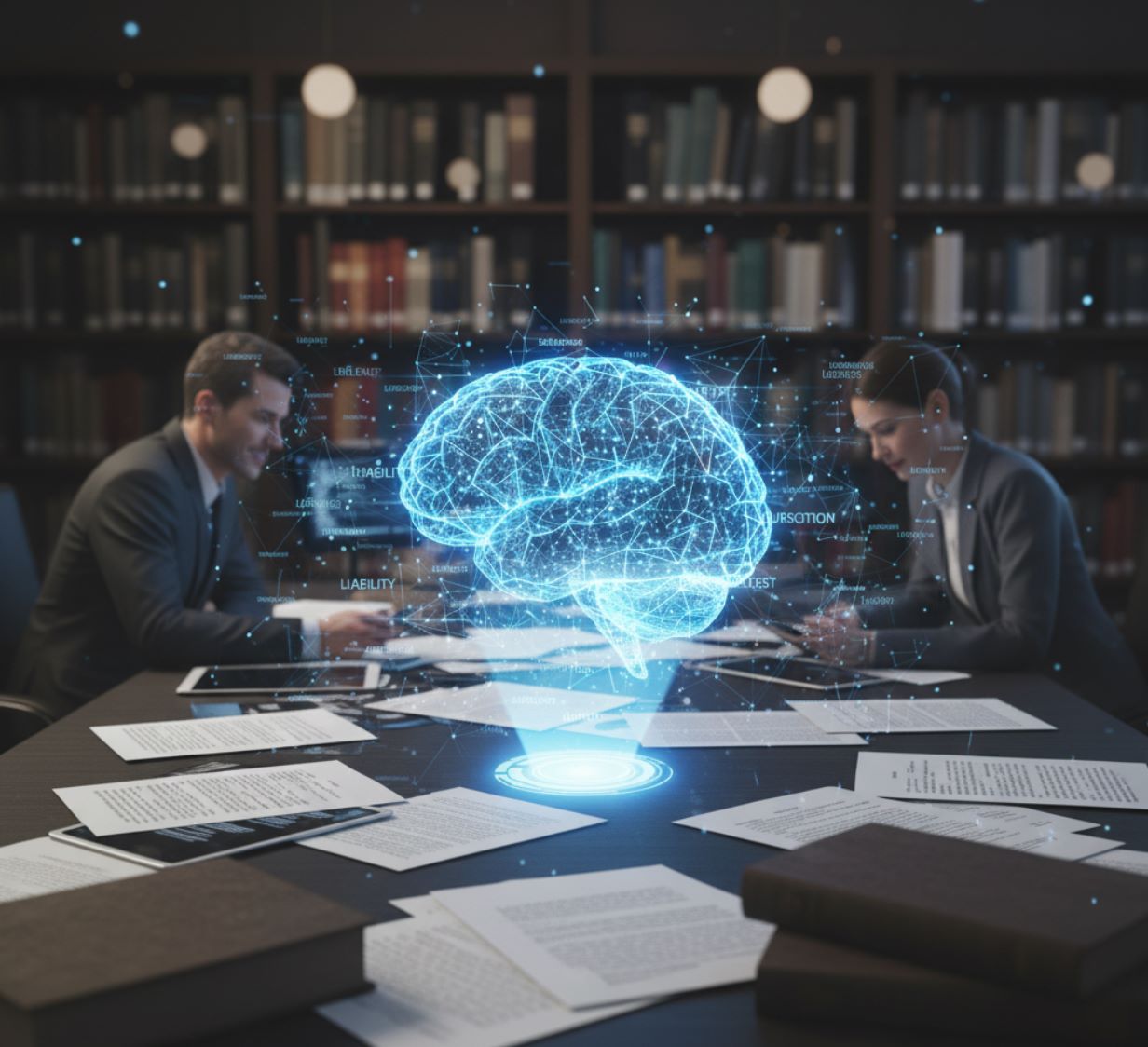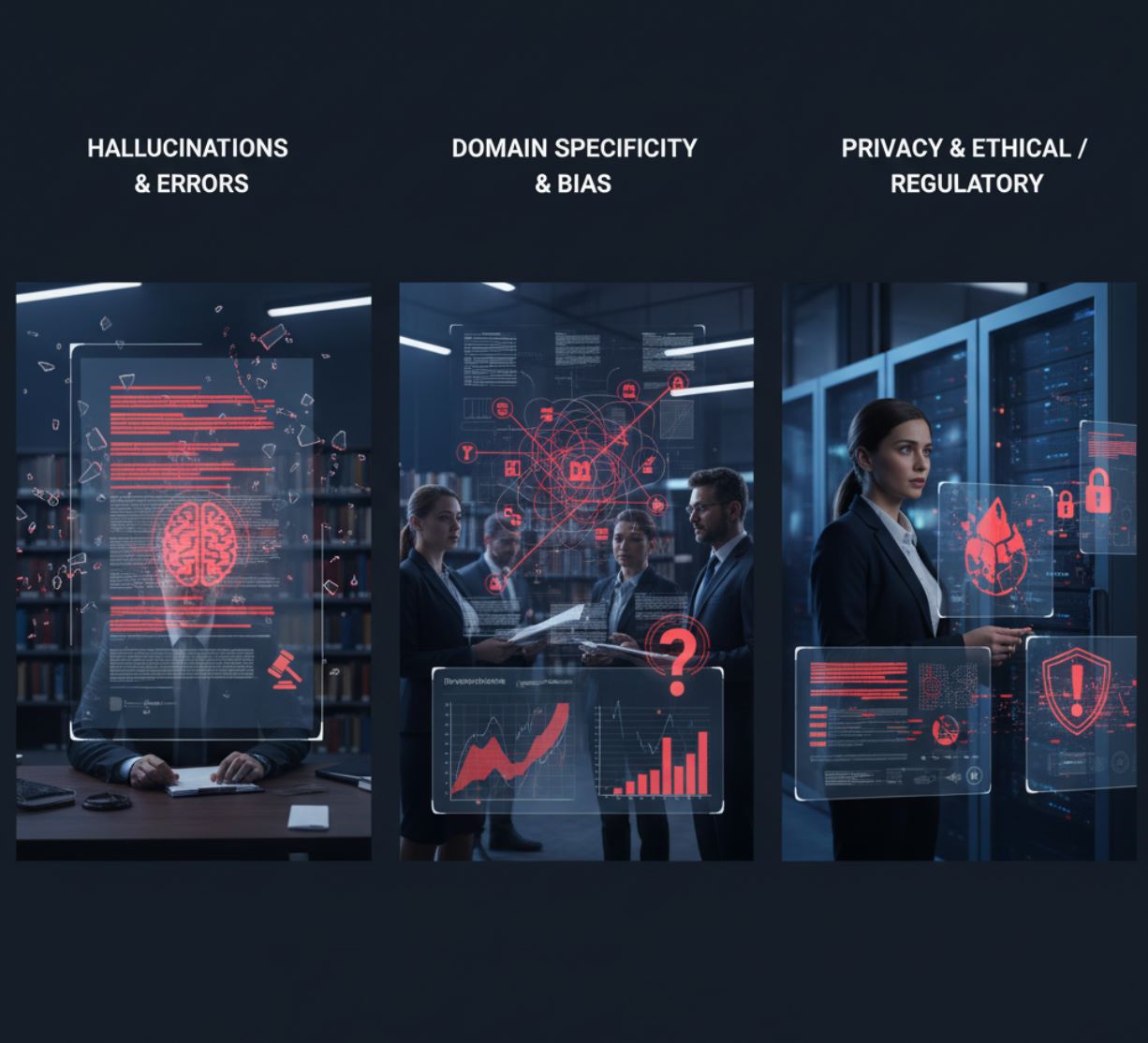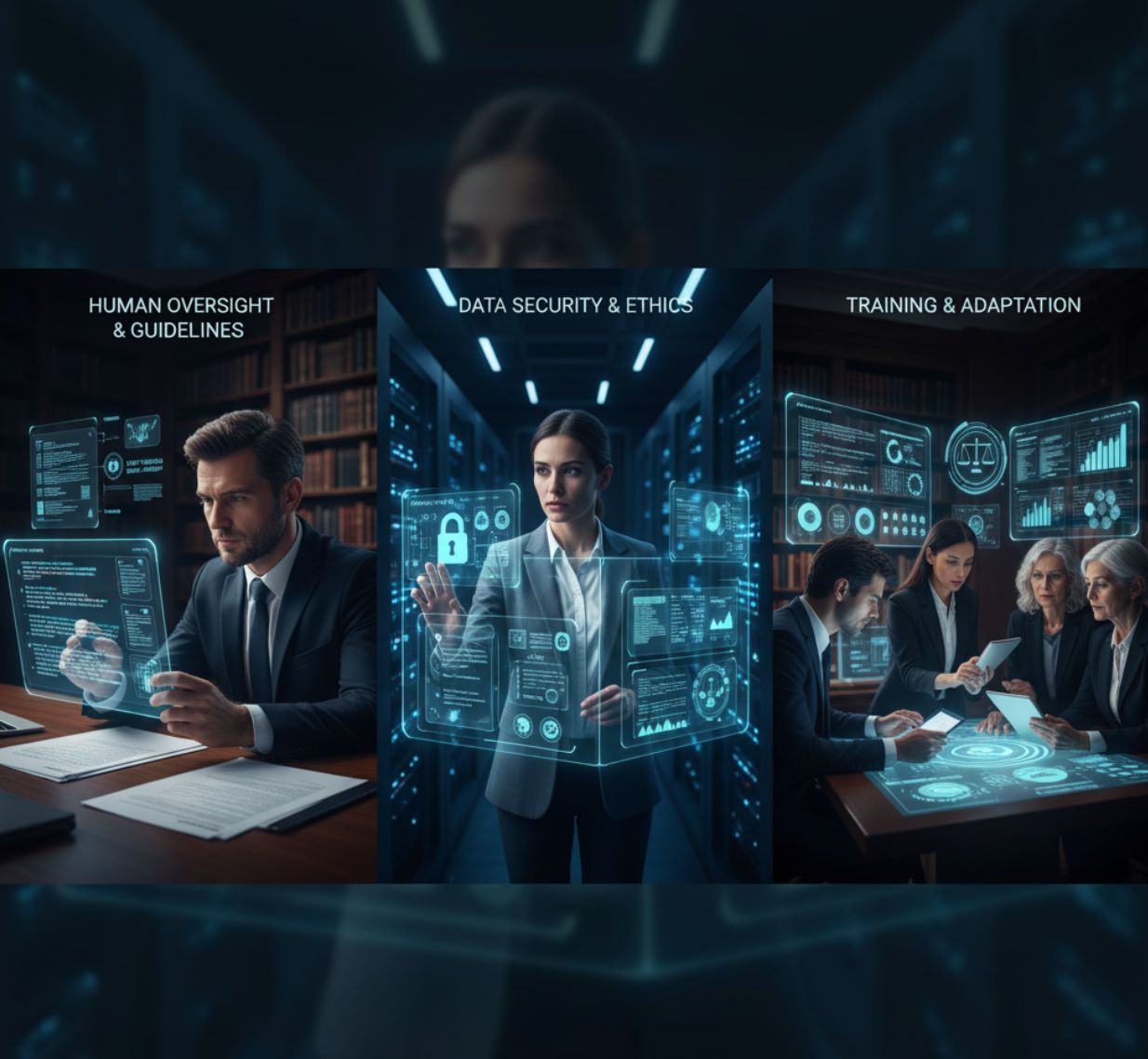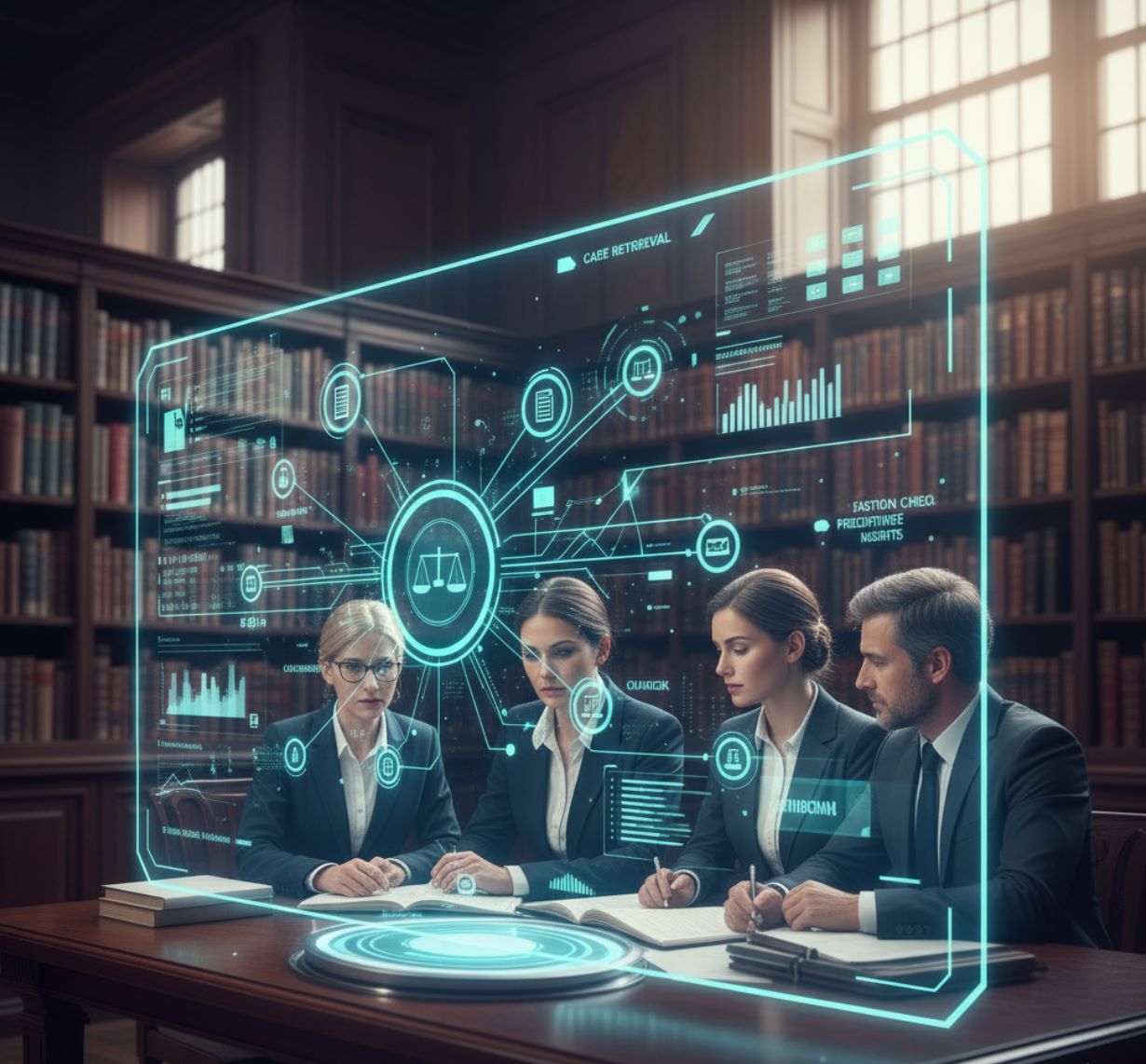AI analyzes complex legal documents
Legal AI is transforming how lawyers and businesses handle contracts, litigation files, and legal research. From e-discovery and contract management to document summarization, AI delivers speed, accuracy, and cost savings—ushering in a new era for the global legal industry.
Law firms often grapple with towering stacks of contracts, case filings, and other lengthy legal papers. Reviewing these by hand is tedious and time-consuming, and even experienced attorneys can overlook details. Modern AI tools can scan and analyze complex legal documents in seconds instead of hours.
In this article we explain how AI systems work with legal text, the main applications (from e-discovery to contract analysis), the benefits and limitations, and what's next for AI in law.
Why Legal Documents Are Challenging?
Legal documents pose unique challenges that make them ideal candidates for AI assistance. They are often extremely long and detailed – far longer than typical business documents – and packed with specialized "legalese," citations, and references. As one survey notes, lawyers routinely spend hours or days combing through pages of case law or contracts. Automatic summarization and analysis can shrink this burden.
Length & Detail
Specialized Language
Varied Formats
AI promises to help by identifying the "needle in the haystack" across millions of pages, letting lawyers focus on higher-level legal reasoning.

How AI Processes Legal Text
AI analyzes legal documents using a combination of machine learning, natural language processing (NLP), and advanced large-language models. In practice, an AI system for legal text typically follows these steps:
Data Ingestion
Convert documents (Word, PDF, scanned images, etc.) into machine-readable text. Optical Character Recognition (OCR) tools recognize and digitize scanned pages. AI also categorizes documents by type (e.g. "contract," "pleading," "deposition transcript").
Parsing & Extraction
Using NLP, the AI identifies key elements such as dates, party names, clauses, or legal citations. For example, it can pinpoint a termination clause in a contract or an adjudication date in a court filing. Machine learning (ML) models are trained on legal data so they recognize patterns and terminology specific to law.
Contextual Analysis
Here is where large language models (LLMs) come in. A state-of-the-art legal AI often uses a retrieval-augmented generation (RAG) approach. In RAG, the system first retrieves relevant legal sources (cases, statutes, regulations, prior contracts) from a database. Then it feeds those documents into the language model's input, "grounding" the AI in factual text. This method greatly improves accuracy in legal tasks, because the AI answer is explicitly based on actual law or agreements.
Summarization and Output
Finally, the AI generates a concise summary or answer. The model might output key highlights, answer specific questions, or even draft text (e.g. a memo paragraph). By reading into its training and the retrieved documents, the AI can explain legal concepts or clauses in plain language.
RAG "improves the accuracy and reliability" of AI-generated text, especially in domains like law.
— Thomson Reuters Research
Key AI Components for Legal Text
AI document review typically employs:
- Machine Learning to detect patterns
- Natural Language Processing to interpret sentences and legal grammar
- OCR to digitize scans
- Retrieval-Augmented Generation (RAG) to ground answers in real legal texts
Advanced Capabilities
Using these together, an AI can:
- Compare clauses across documents
- Match facts to applicable law
- Maintain large context windows
- Analyze multi-page contracts comprehensively

Key Applications and Use Cases
AI analysis of legal documents is transforming many aspects of legal work. Some of the most important use cases include:
Document Review & eDiscovery
AI can rapidly sift through thousands or millions of documents in litigation or investigations. It flags which files are relevant, categorizes them (e.g. "privileged," "responsive"), and highlights key facts.
- Extract names, dates and facts from emails or contracts at scale
- Speed up the eDiscovery process by orders of magnitude
- Find "the needle in the haystack" across case files and contracts
- Automatically categorize documents by relevance and privilege
Contract Analysis and Management
Law firms and legal departments use AI to handle large contract collections. AI can automatically locate important clauses and compare them across agreements.
- Automatically locate important clauses (termination rights, payment terms, indemnities)
- Compare provisions across multiple agreements
- Flag unusual provisions or compliance issues
- Visualize contract data and spot trends
- Assist in drafting contracts by finding relevant documents and trusted clauses
Legal Research & Summarization
AI creates concise summaries of long documents and assists in traditional research by querying vast databases of case law, statutes, and secondary sources.
Manual Research
- Reading 50-page court rulings entirely
- Hours of case law review
- Risk of missing key points
AI-Assisted Research
- Concise summaries of key points
- Grounded citations from real cases
- Substantial time savings
Products like Lexis+ AI and Westlaw's AI search claim to "avoid hallucinations" by returning grounded legal citations. However, recent tests show these tools still make mistakes on a fraction of queries, so lawyers must double-check the results.
Drafting and Client Communication
AI can help with drafting letters, memos, or entire briefs, and can simplify legal language for clients.
Document Drafting
- Generate initial text for pleadings or statements of facts
- Suggest phrasing and fill boilerplate clauses
- Outline arguments based on example texts
- Refine drafts and add relevant citations
Client Communication
- Produce plain-language summaries of complex contracts
- Translate documents into other languages
- Improve understanding for non-experts
- Streamline international transactions
Lawyers see AI's biggest benefit in drafting documents, as it can generate initial text by analyzing patterns from existing examples.
— Clio Survey Research
Key Insight: AI acts as a powerful assistant across many tasks: automating eDiscovery, highlighting contract issues, generating summaries, supporting research, and jump-starting drafting. These capabilities mean lawyers can focus on strategy and judgement rather than routine paperwork.

Benefits of AI in Document Analysis
Using AI for legal documents brings several concrete advantages:
Speed and Efficiency
Improved Consistency
Cost Savings
Deeper Insights
A task that would previously have taken an hour was completed in five minutes or less using AI.
— Legal Industry Leader
Bottom Line: AI in legal work boosts productivity and raises quality. It lets firms do more with the same resources, while often improving the thoroughness of reviews.

Challenges and Limitations
Despite its promise, AI analysis of legal documents comes with important caveats:
Hallucinations and Errors
Large language models can produce false or invented information. There have been high-profile cases of lawyers citing fictional cases generated by ChatGPT.
Specialized legal AI tools reduce such errors but don't eliminate them. AI outputs must be verified by a human lawyer. Users can't blindly trust AI answers without checking against actual sources.
Domain Specificity
The law is highly nuanced. Precedents vary by jurisdiction and change over time. An AI might retrieve a semantically similar case that is actually inapplicable due to subtle legal differences, leading to "hallucinated" or irrelevant citations.
As one Stanford analysis notes, legal retrieval is especially hard, and errors often happen because the system's retrieval fails to find the binding authority. This makes AI less reliable in areas where law is evolving.
Bias and Fairness
AI learns from historical data. If the training data contains biased language or reflects discriminatory legal practices, the AI can perpetuate those biases.
For example, if past case law shows a certain bias, an AI summary might inadvertently echo it. The ethical guidelines caution that human oversight is needed to catch and correct biased outputs.
Data Privacy and Security
Legal documents often contain highly sensitive client information. Using AI tools (especially cloud-based ones) raises privacy concerns.
In-house deployments or robust encryption may be required to meet confidentiality rules.
Regulatory and Ethical Constraints
The use of AI in law is under increasing scrutiny. Bar associations in California, New York and elsewhere now require lawyers to disclose or supervise any AI-generated work product.
If an attorney submits a brief with undisclosed AI text or citations, they could face sanctions (as has happened). More broadly, new laws like the EU AI Act (adopted in 2024) are starting to impose rules on high-risk AI systems.

Best Practices for Using Legal AI
To get the most from AI while minimizing risks, experts advise:
Set Clear Guidelines
Define which tasks will use AI and how. Establish an AI usage policy for your firm. Identify which document types or stages of review are suitable for automation.
Maintain Human Oversight
Always have a lawyer verify AI outputs. For example, double-check all AI-identified clauses or case citations against the original sources. Treat the AI as a research assistant, not the final authority.
Ensure Data Security
Vet vendors carefully. Use tools that offer strong data encryption, compliance certifications (ISO 27001, SOC 2) and on-premises options if needed. Never upload highly sensitive documents to an unsecured or unknown AI service.
Guard Ethical Standards
Follow professional rules. Keep client confidentiality. Disclose AI use when required by courts or regulations. Avoid relying on outputs without knowing how they were generated.
Invest in Training
Educate your team. Lawyers and paralegals should understand the AI's capabilities and limits. Provide training on how to prompt the AI effectively and how to interpret its results. Stay updated on new AI features and risks.

The Future of AI in Legal Work
Legal AI is still rapidly evolving. The next generation of tools promises even more sophisticated document analysis. Researchers believe that as retrieval-augmented models mature, they could transform the way attorneys work.
RAG-based "legal AI assistants" have reduced errors in pilot studies and may finally fulfill the promise of AI for law.
— Harvard Law JOLT Article
As AI systems become better at understanding context and citing reliable sources, adoption will likely increase. Indeed, most professionals surveyed expect AI to have a "high or transformational impact" on their jobs in the next few years.
Near-Term Developments
- More integration into familiar legal software
- Enhanced research platforms and contract management systems
- Improved practice-management tools
- Expanded legal education on responsible AI use
Long-Term Impact
- Democratized access to legal information
- Plain language translation of complex laws
- Legal knowledge available to non-experts
- More accessible legal services

Combining AI with legal expertise "has only scratched the surface of this incredible technology." By staying informed and cautious, legal teams can ride this new wave of innovation to provide faster, more cost-effective, and ultimately more accessible legal services.
— Industry Expert Analysis



